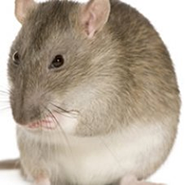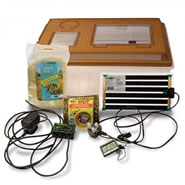Free Delivery
On order over £79*



Housing:a well ventilated, large wooden vivarium

Heating: basking temperature of 88oF with ambient air temperature of 85oF

Diet: Carnivorous diet of mice, rats, and other mammals

Decoration: A large open space with hides scattered throughout

Common boa constrictors do best with a large terrestrial vivarium for their enclosure. This is because wood is an excellent insulator of heat and so a wooden vivarium will make it easier to control the crucial temperatures required inside the habitat. The wooden vivarium should have good ventilation to allow air to flow in and out of the enclosure.
As a juvenile the boa will thrive in enclosure around 3ft in length and 2ft in depth and hieght. As the boa grows this enclosure will need to be upgraded to a 4ft wooden enclosure. Large females may require a 5 or 6ft enclosure when fully grown.
Common boas require a day-time temperature of 86F with a basking spot of around 88F. The best way to achieve this is to use a ceramic heat emitter on one side of the enclosure being controlled by either a pulse proportional thermostat. This will keep temperatures steady throughout the day and night whilst also creating a slight temperature gradient in the enclosure. A basking light can also be used but is not necessary, if one is introduced the temperature should not exceed 90F and the basking light should only be on for 10-12 consecutive hours per day. All basking lights and ceramic heat bulbs must be guarded to ensure the snake cannot come into contact with the bulb.
If a ceramic is being used as the sole heat source it is advisable to use LED lights to light the enclosure for 10-12 consecutive hours per day. This provides the boa with a good day/night cycle.
Temperatures should be monitored daily using a thermometer.
Whilst any loose substrate has the small potential to be accidentally swallowed, we have found this to not be a problem with coarse beech woodchips or coarse bark chips and that is what we keep our common boa constrictors on. They are also very easy to clean.
When decorating the enclosures it is adviseable to include a number or large decorations ensuring there is at least on good hiding spot at the warm and cold ends. This will help the boa feel more secure and also allow it to use the entirety of it's enclosure confidently. The vivarium should be decorated with various pieces of wood and artificial plants to achieve this.
A juvenile common boa constrictors enclosure can also include some vertical structure as they will climb if given the oppertunity. These vertical structures are best created using natural wood decorations and vines.
A boa constrictor's diet consists of frozen thawed rats, mice and rabbits. When young the boa will be eating frozen mice roughly once a week. The size of the prey increases as the snake gets bigger moving from small mice up through XL mice to rats and eventually a small rabbit. When fully grown the snake only needs to be fed a large meal once every 2-3 weeks.
Water should aways be available for both drinking and bathing. We advise providing a bowl large enough for the snake to submerge itself inside on the cool end of the vivarium. Water should be changed daily to ensure it remains fresh.
If you keep a male and female together, they may breed. You do not need to do anything to encourage this, providing they are healthy and the conditions are good, it will happen naturally. You need to consider whether you want this to happen. What will you do with the babies?
A gravid female does not require any additional nesting material. In some cases if the male is extremely active or is stressin the female it may be worth temporarily removing him from the enclosure. Common Boa constrictors are a livebearing species so they will not lay eggs. Roughly 24 weeks after mating she will give birth, the babies should be removed immediately and placed in a smaller enclosure with a moist substrate.
Common boa constrictors are a great pet for intermediate reptile owners. They are a very curious and generally docile snakes making them great for both display and handling.
Of the large bodied snakes common boas are one of the more interesting species. Their facial structure with the heat pits coupled with their large body and reach makes them a very impressive snake.
Give a common boa the right setup and diet and you're guaranteed to have a great pet.
Sign up to the Reptile Centre newsletter so you don't miss out on all the latest offers and guides to give your pet the best they deserve






